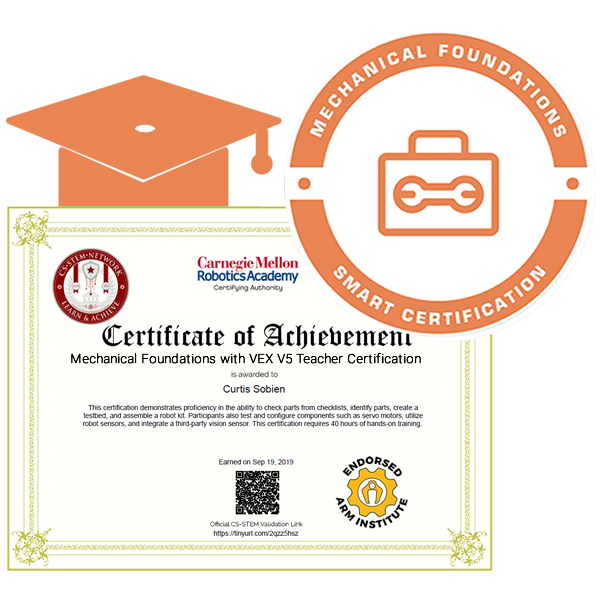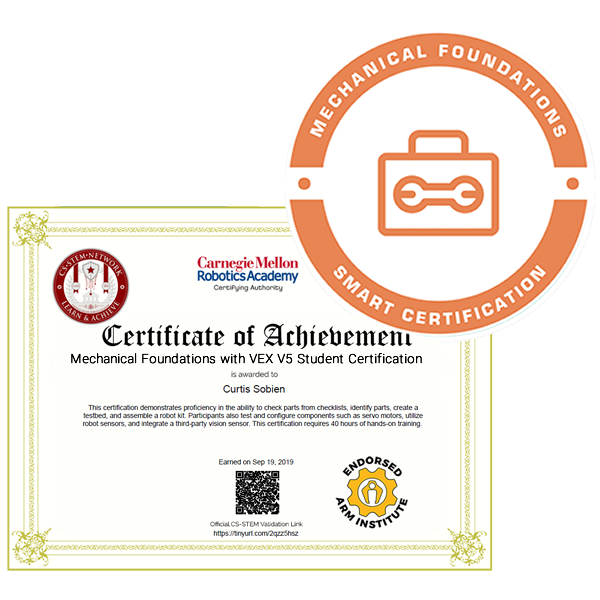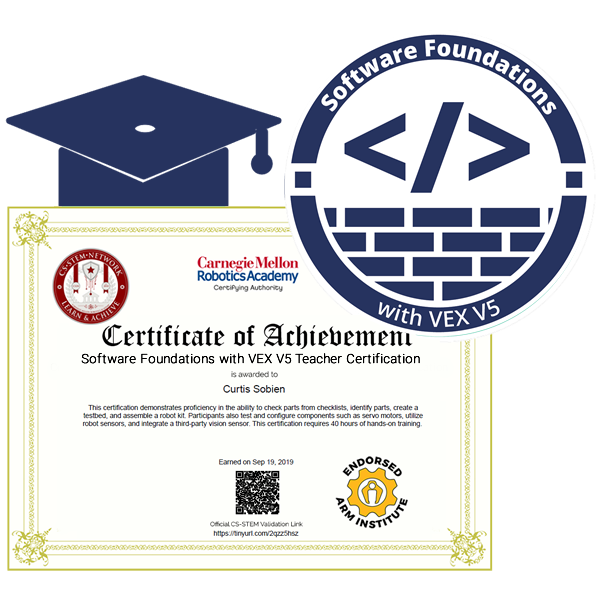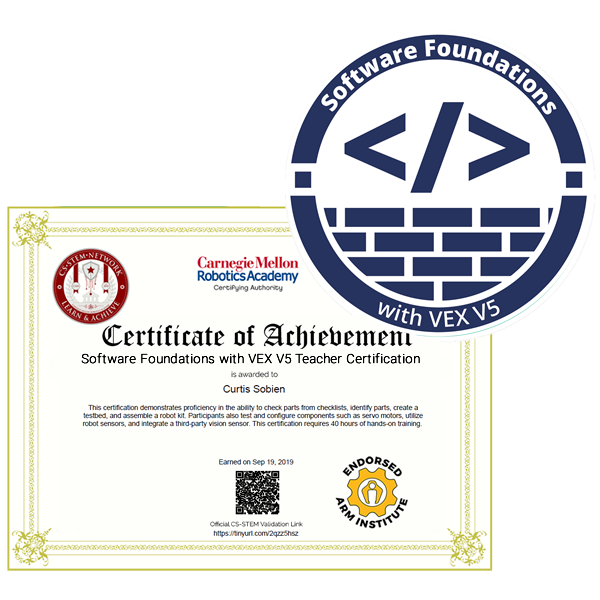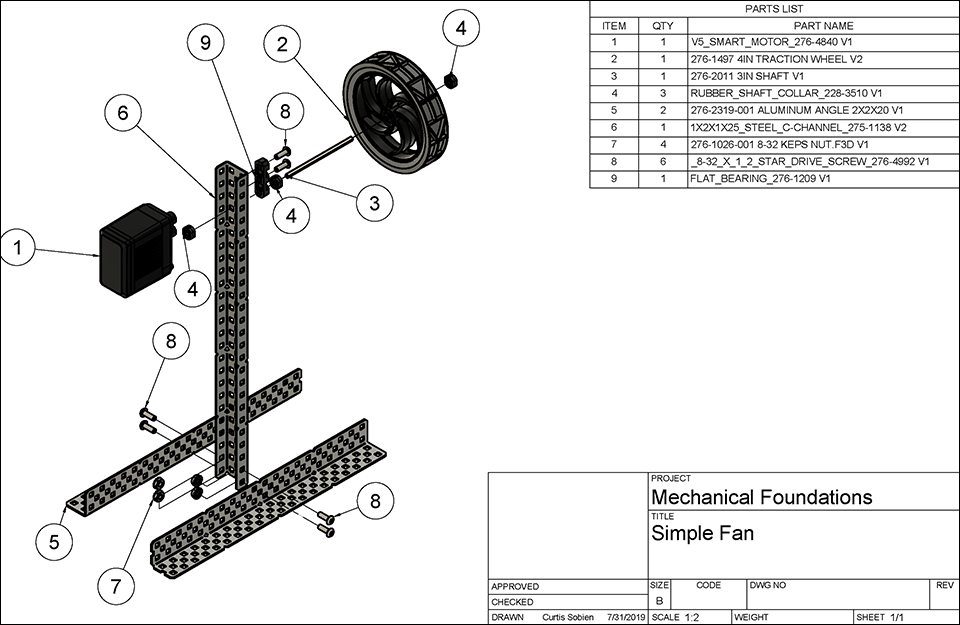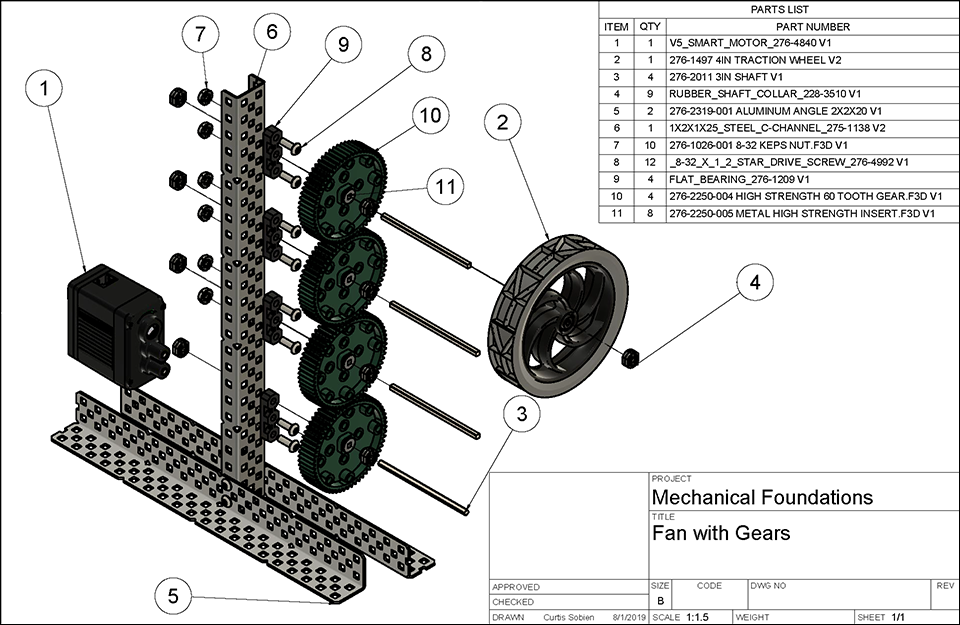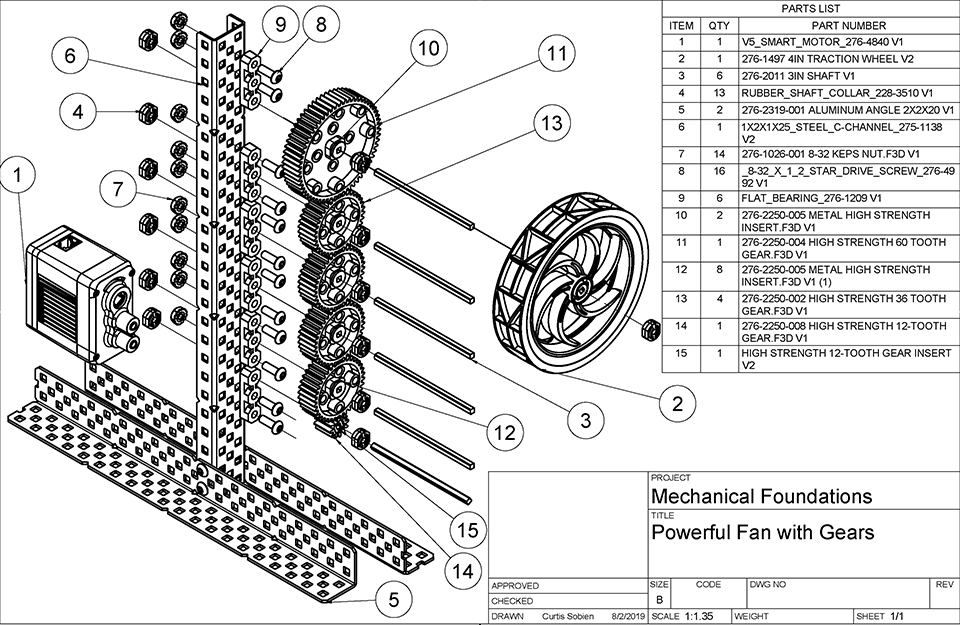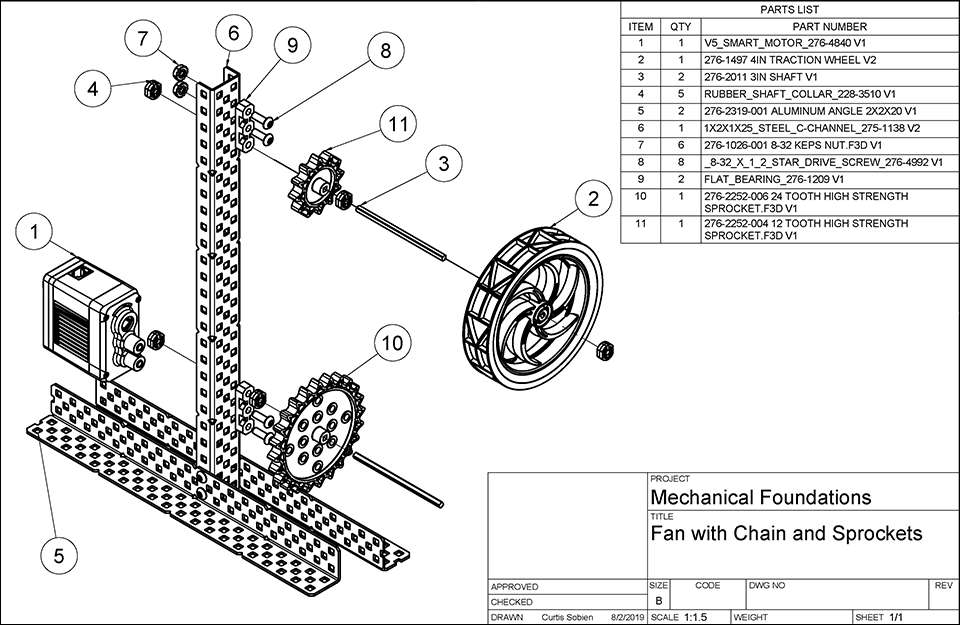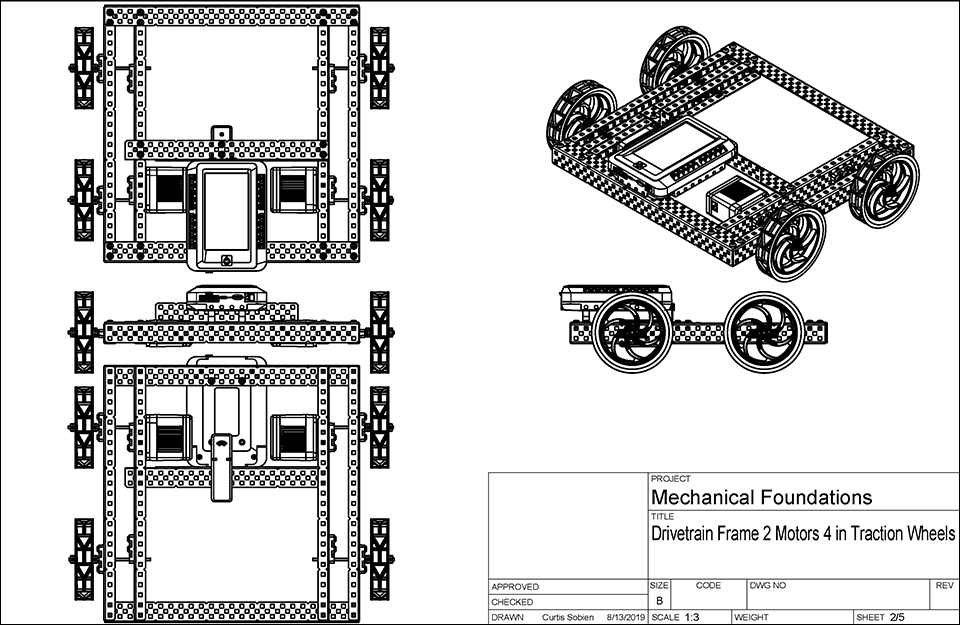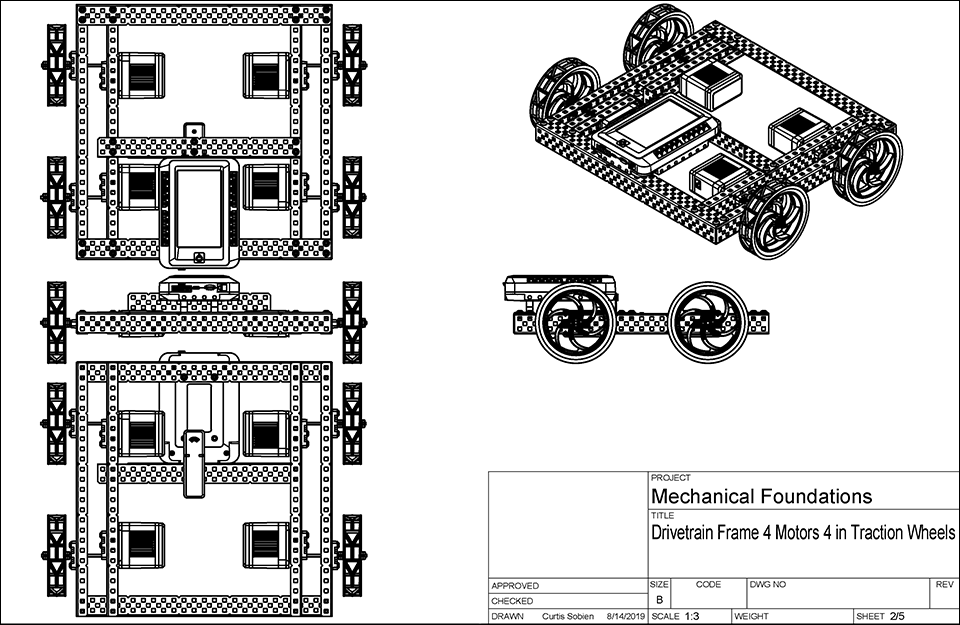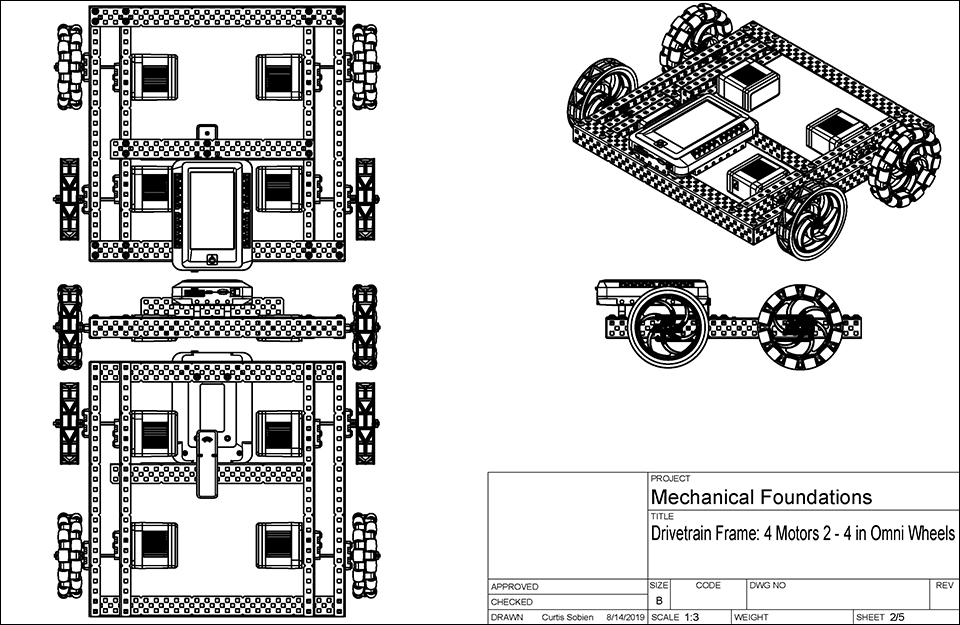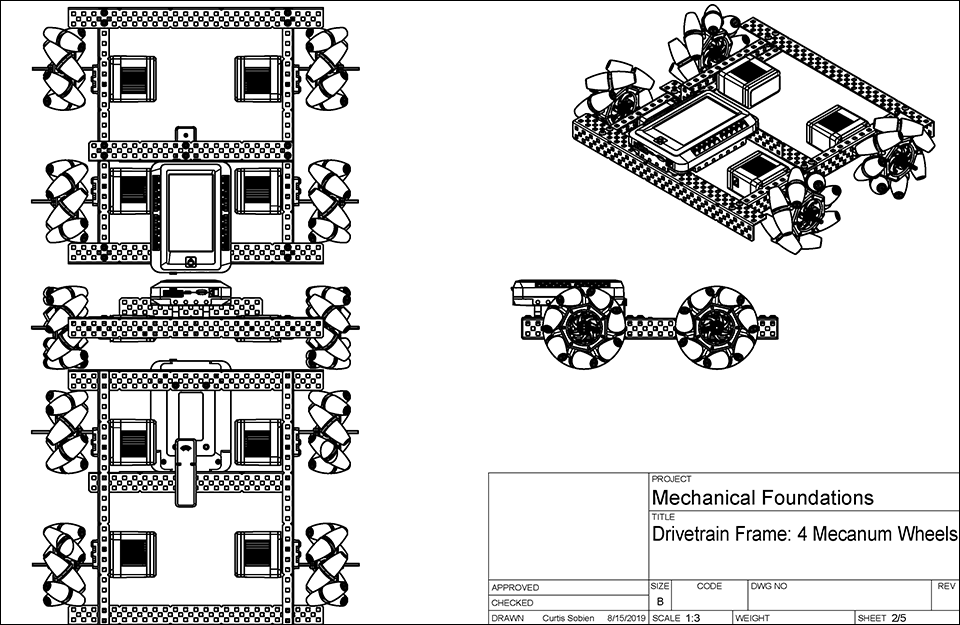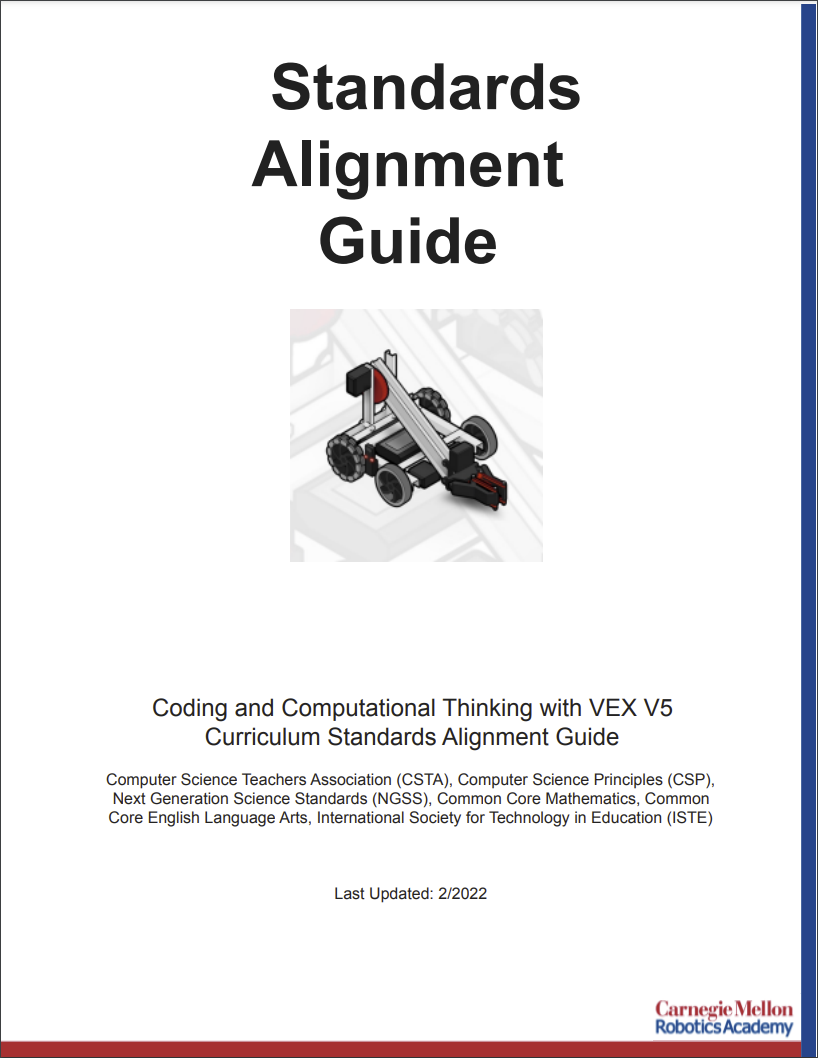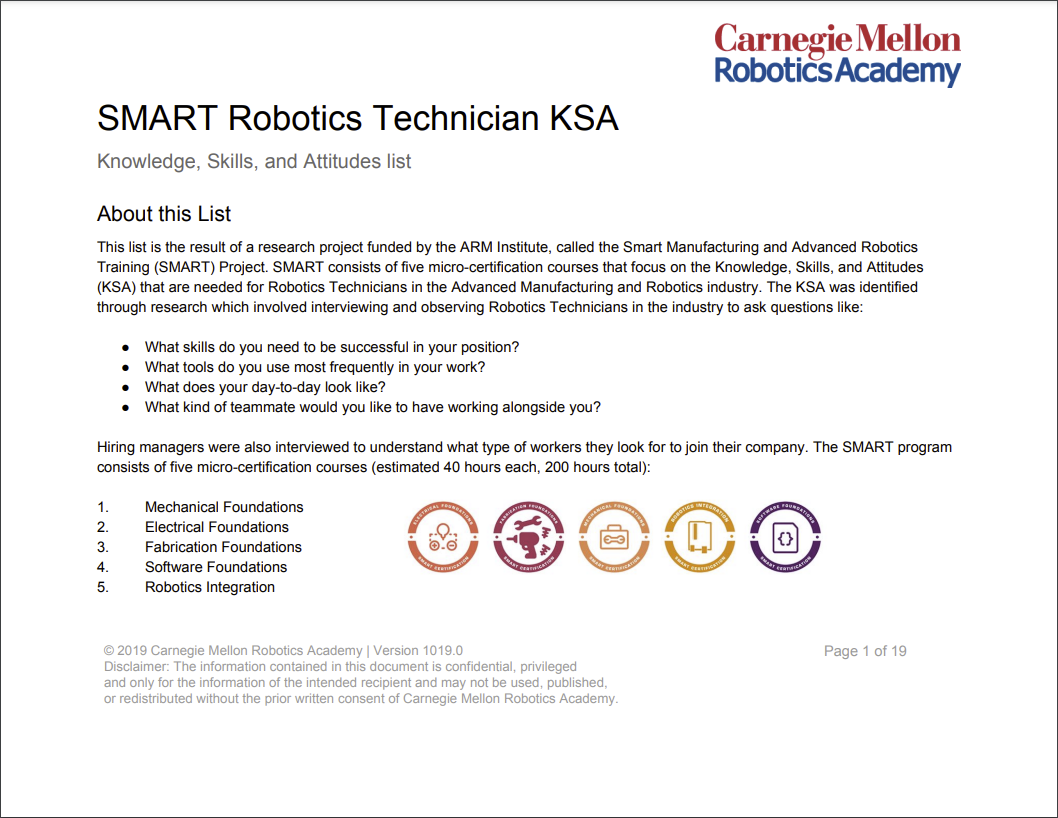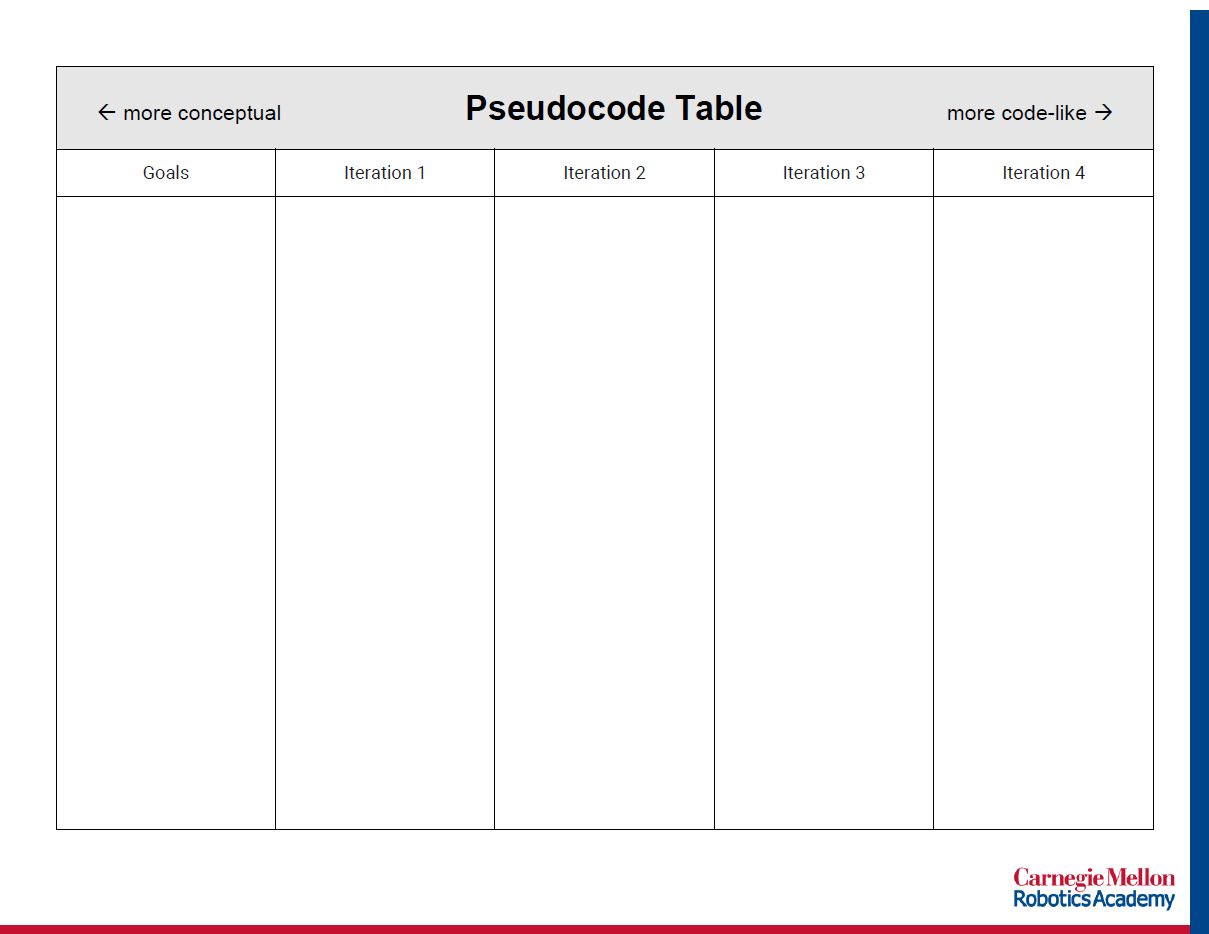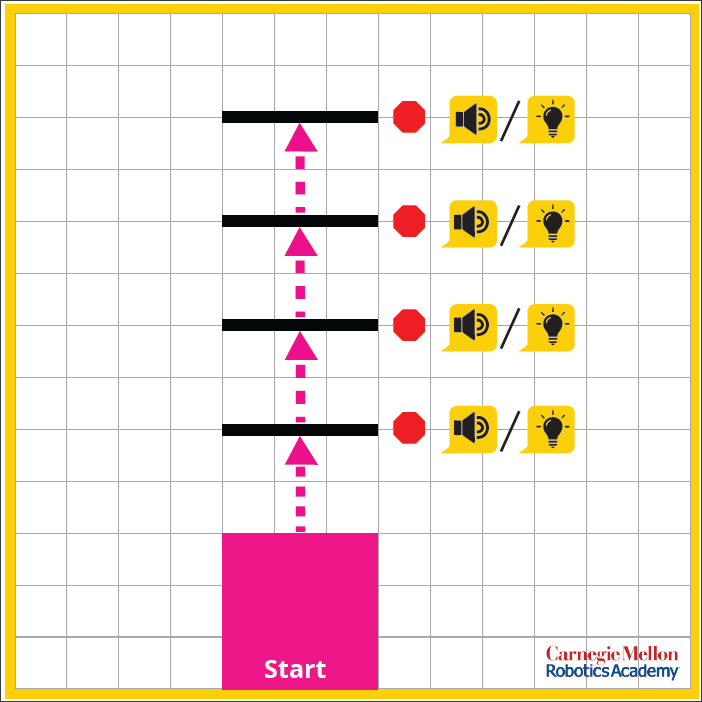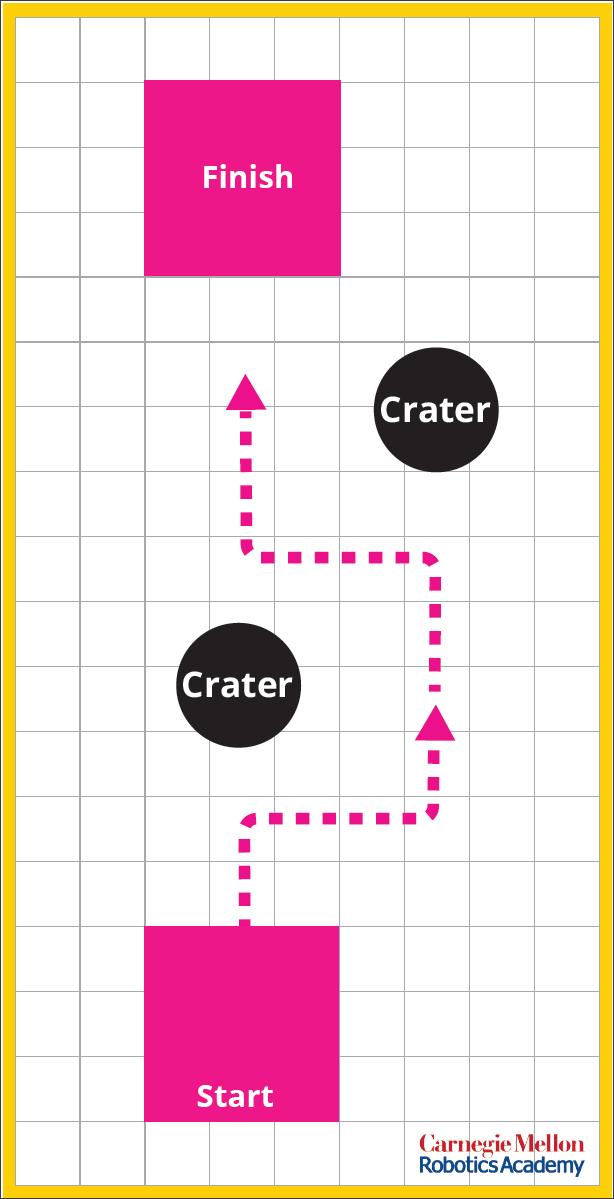VEX V5 and VEX EXP Resources
Curriculum, worksheets, building instructions, teacher training, and certifications for your VEX robotics classroom.
Free VEX V5 and VEX EXP Curriculum and Activities
Coding and Computational Thinking with VEX V5

This curriculum provides a structured sequence of programming activities in real-world project-based contexts. The projects are designed to get students thinking about the patterns and structure of not just robotics, but also programming and problem-solving more generally. This curriculum includes videos, animations, and step-by-step lessons designed to help learners foster Computational Thinking using the VEX V5 hardware and VEXcode programming software. Several units have been upgraded to support the VEX EXP and all programming lessons are compatible between VEX V5 and VEX EXP.
| More Information > | Access on the CS-STEM Network > |
Mechanical Foundations with VEX V5
Mechanical Foundations provides participants with knowledge and hands-on experiences with a variety of tools and hardware components. By understanding the foundational mechanical principles that underpin robotics, participants develop the ability to design, construct, and maintain these systems with increased confidence and efficacy. The course covers topics such as structure, power transmission, motion, and mechanisms using hands-on activities with VEX Robotics kits. As part of the SMART Robotics Technician Program, Mechanical Foundations is aligned to the knowledge, skills, and attitudes that robotics technicians need to be successful. Lesson materials demonstrate concepts using components from the VEX V5 kits, but can successfully be substituted with VEX EXP components.
| More Information > | Access on the CS-STEM Network > |
Software Foundations with VEX V5

Software Foundations is an introduction to programming concepts. Students who complete this curriculum demonstrate an understanding of the software engineering process through repeated planning, testing, and iteration throughout the units. Students also learn basic robot movement, how to use feedback from different kinds of sensors, and how to create complex programs using loops and decision-making logic. All programming lessons are compatible between VEX V5 and VEX EXP.
| More Information > | Access on the CS-STEM Network > |
Virtual Iris Rover Badge

This badge is a sample activity from the full Coding and Computational Thinking with Virtual VICE Robot curriculum. In this activity, you will learn how to program the movement of a Virtual VICE robot from directly within your web browser while completing challenges themed after the real-world Iris Rover from Carnegie Mellon University. Students who learn to program the Virtual VICE robot will learn valuable skills that can be directly applied to their VEX robots.
Hour of Code Activities

The Hour of Code is a global initiative by Computer Science Education Week and Code.org to introduce millions of students to one hour of computer science and computer programming. The Carnegie Mellon Robotics Academy is proud to support learners participating in the Hour of Code through a variety of free activities, all hosted through our CS-STEM Network.
Virtual Robot Curriculum and Activities
Coding and Computational Thinking with aVirtual VICE Robot

Coding and Computational Thinking with a Virtual VICE Robot features a programming interface and virtual robot embedded directly within the curriculum. Over 75 programmable virtual environments are embedded throughout, allowing students to learn big ideas in robotics, coding, computational thinking, and mathematics. The virtual robot itself contains simulated versions of the programmable motors, sensors, and other components. Students who learn to program the Virtual VICE robot will learn valuable skills that can be directly applied to their VEX robots.
| More Information > | Access Preview on the CS-STEM Network > |
VEX V5 and VEX EXP Teacher Training
Certified Onsite Teacher Training for VEX V5

Carnegie Mellon Robotics Academy's Onsite Training courses immerse educators in the world of robotics and CS-STEM education. Our program supports educators through hands-on training. Onsite training is conducted at the National Robotics Engineering Center (NREC) in Pittsburgh, PA.
Certified Online Teacher Training for VEX V5 and VEX EXP
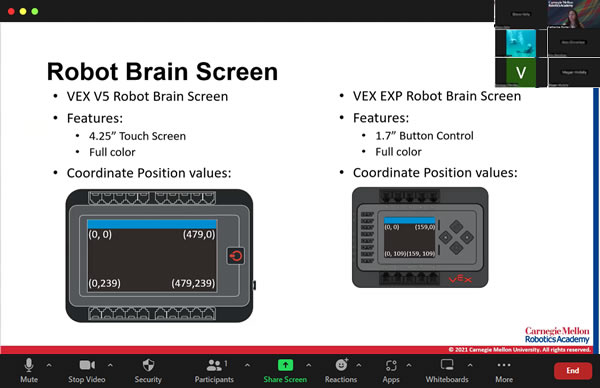
Enjoy the convenience of taking Robotics Academy courses from anywhere in the world. Carnegie Mellon Robotics Academy's Online Training courses feature an interactive class where participants log in for live instruction and Q&A, and then complete some activities from the curricula and other requirements as independent study.
Certifications for VEX V5 and EXP
Coding and Computational Thinking - Teacher Certification
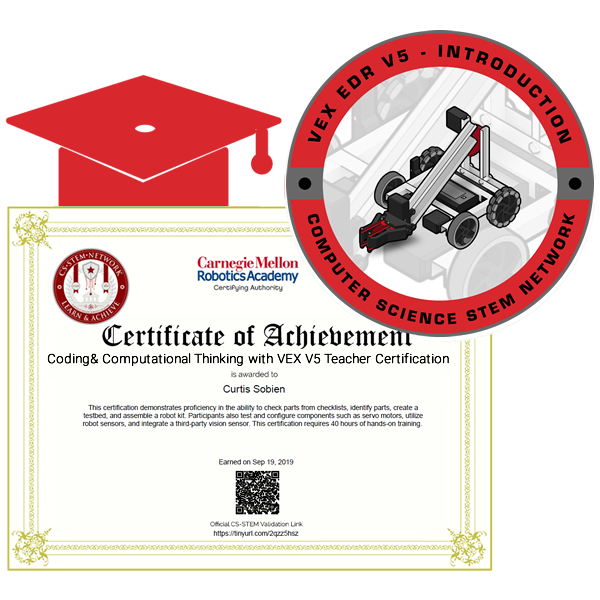
At the Carnegie Mellon Robotics Academy, we leverage a "train-the-trainer" model to enable our curriculum, certifications, and microcertifications to make a large impact while helping to guarantee that implementations are positive and effective for learners. Educators who have been trained and certified by the Carnegie Mellon Robotics Academy are able to offer certification opportunities for their students. Teacher certifications list 36 professional development hours and may be used as evidence for continuing education credits.
Coding and Computational Thinking - Student Certification
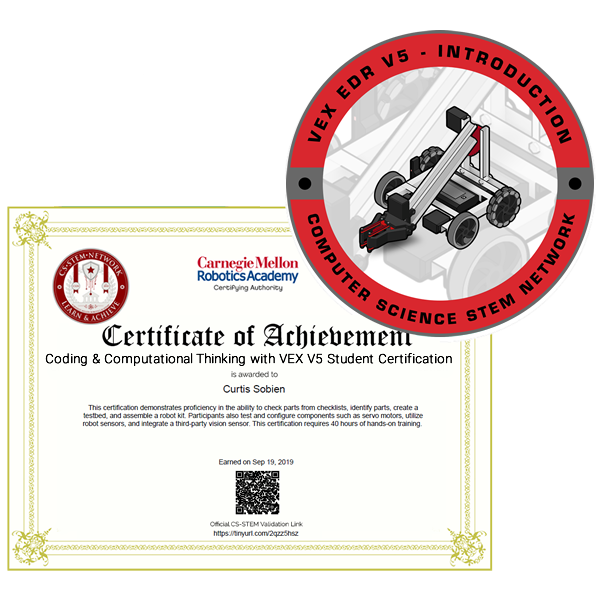
Certifications and microcertifications are not comprised of a knowledge exam alone. As learners progress through the curriculum, they earn badges and upload computational artifacts (evidence such as coding solutions, pseudocode, photos of robot builds, wiring diagrams, etc.) that reflect their understanding.
